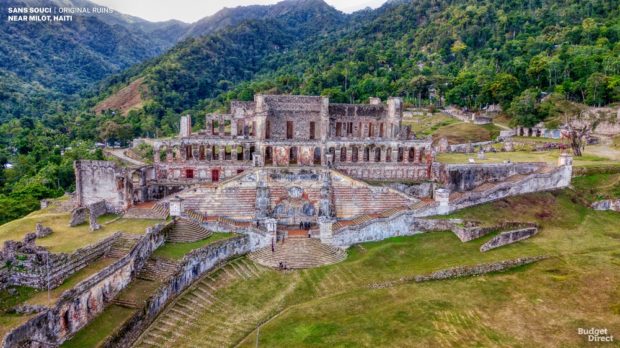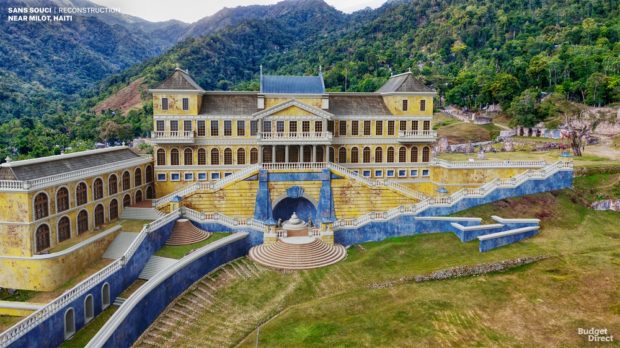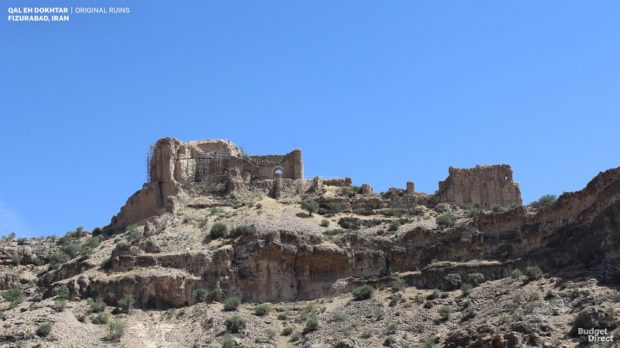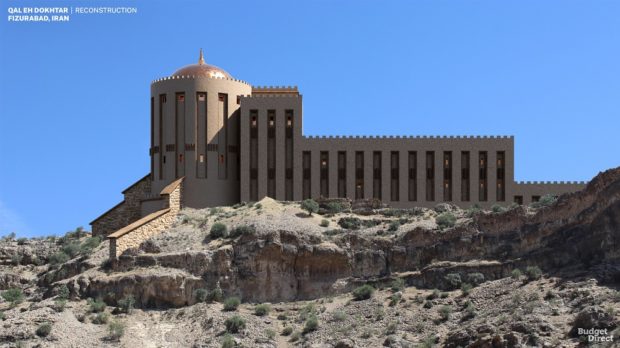Good designers love a challenge, but how many could tackle these epic refurb jobs? They include an ancient Greek palace battered by earthquakes, and a once-great English House that is now just a single stone wall.
Design projects start with a vision. So Budget Direct used the power of digital technology to see what these seven ancient sites could look like after a few licks of paint. And we’ll tell you the stories behind these fascinating places.
Sans Souci
Sans Souci Palace was the home of Henry Christophe, a controversial figure who ruled Haiti from 1811-1820. Some call Christophe a revolutionary hero. Others label him a dictator. But there was doubt about the splendour of his palace.


Qal’eh Dokhtar
Built by the Persian ruler Ardashir in 209 AD, Qal’eh Dokhtar fortress sits on a mountain near Firouzabadi-Kavar, Iran. It was the first major structure to adopt the chartaq style, making it an important building in Iran’s long history.


Knossos
It’s a miracle that any of Knossos still stands. This 2,000-year-old palace has withstood several invading armies, a fire, and giant earthquakes.
The Ruzhany Palace
The Ruzhany Palace in Belarus was a power centre of the Sapiehas, one of the 17th-century’s most influential elite families. However, the Sapieha’s power began to wane during later years, and the family home fell into disrepair.
Dungur Palace
We don’t know much about the Dungur Palace remains in Ethiopia. But archaeologists suspect they were part of a sprawling African empire that stretched as far as Yemen. Some have suggested Dungur Palace was the official residence of the legendary Queen of Sheba.
Clarendon Palace
Clarendon Palace is where King Henry II signed a constitution to extend his authority over the church. The plan backfired, leading to the murder and martyrdom of Thomas Becket. With his plans in ruins, Henry was forced to sign a settlement with the church. Today, only a single wall of Clarendon Palace remains standing.
Husuni Kubwa
The 14th-century Husuni Kubwa residence was the definition of a grand palace. The Sultan’s two-acre sprawling home had over 100 rooms, a swimming pool, and a private theatre. It was also the only building in the region to have indoor plumbing.
You’d need a billion-dollar budget for these makeover jobs. Few of us will ever have that, but at least those loft conversions and bathroom refurbs don’t seem quite as daunting anymore!
